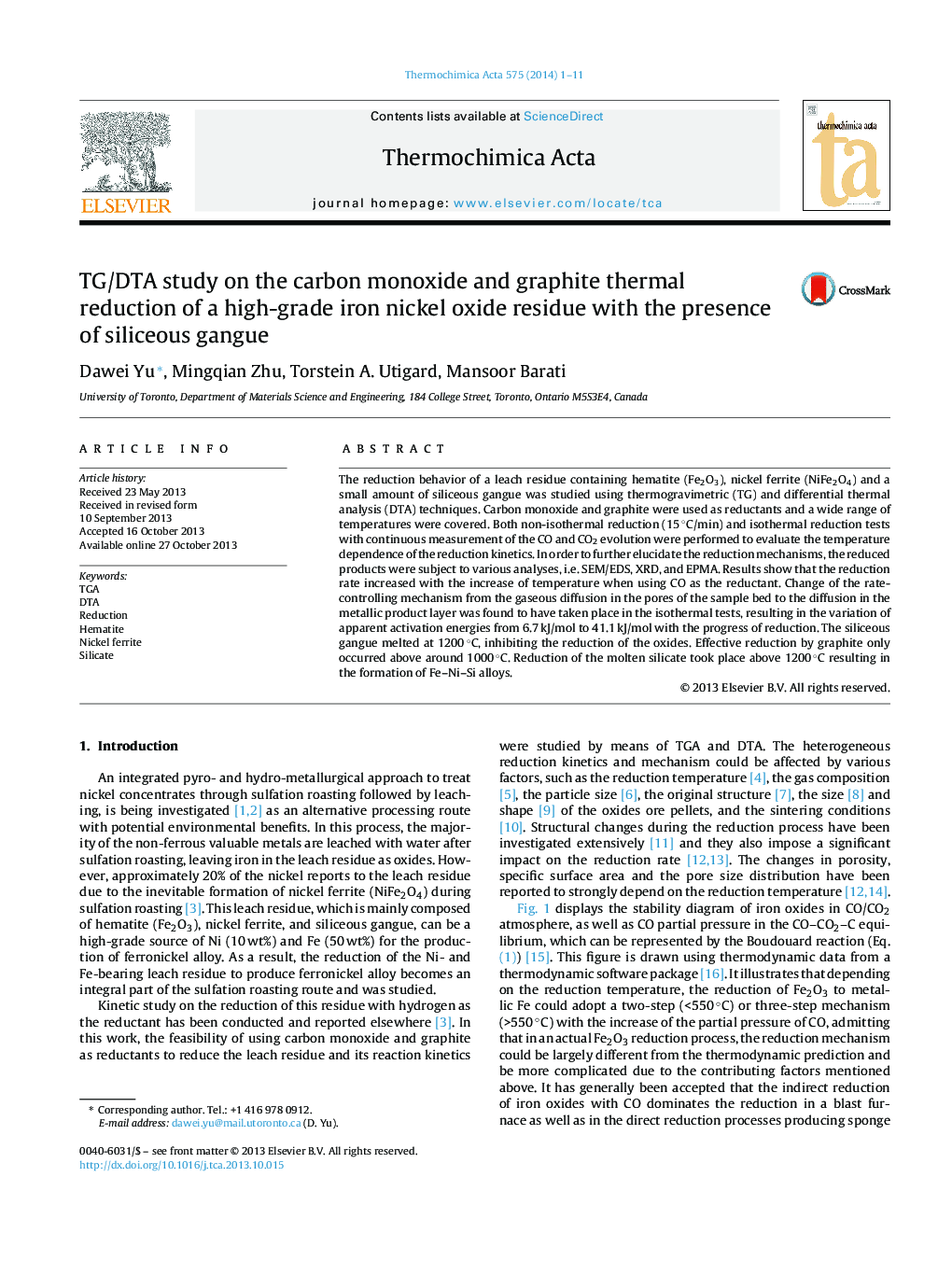| کد مقاله | کد نشریه | سال انتشار | مقاله انگلیسی | نسخه تمام متن |
|---|---|---|---|---|
| 673498 | 1459509 | 2014 | 11 صفحه PDF | دانلود رایگان |

• We examine the reduction of a leach residue (Fe2O3, NiFe2O4) with CO and graphite.
• Reduction by graphite requires higher temperature (>1000 °C) than by CO (>400 °C).
• Siliceous gangue melted at 1200 °C, which reduced the reduction rate.
• Ferronickel alloys formed sinter to a greater extent at higher temperatures.
• Fe–Si alloy is also formed from the graphite reduction of the molten silicates.
The reduction behavior of a leach residue containing hematite (Fe2O3), nickel ferrite (NiFe2O4) and a small amount of siliceous gangue was studied using thermogravimetric (TG) and differential thermal analysis (DTA) techniques. Carbon monoxide and graphite were used as reductants and a wide range of temperatures were covered. Both non-isothermal reduction (15 °C/min) and isothermal reduction tests with continuous measurement of the CO and CO2 evolution were performed to evaluate the temperature dependence of the reduction kinetics. In order to further elucidate the reduction mechanisms, the reduced products were subject to various analyses, i.e. SEM/EDS, XRD, and EPMA. Results show that the reduction rate increased with the increase of temperature when using CO as the reductant. Change of the rate-controlling mechanism from the gaseous diffusion in the pores of the sample bed to the diffusion in the metallic product layer was found to have taken place in the isothermal tests, resulting in the variation of apparent activation energies from 6.7 kJ/mol to 41.1 kJ/mol with the progress of reduction. The siliceous gangue melted at 1200 °C, inhibiting the reduction of the oxides. Effective reduction by graphite only occurred above around 1000 °C. Reduction of the molten silicate took place above 1200 °C resulting in the formation of Fe–Ni–Si alloys.
Journal: Thermochimica Acta - Volume 575, 10 January 2014, Pages 1–11